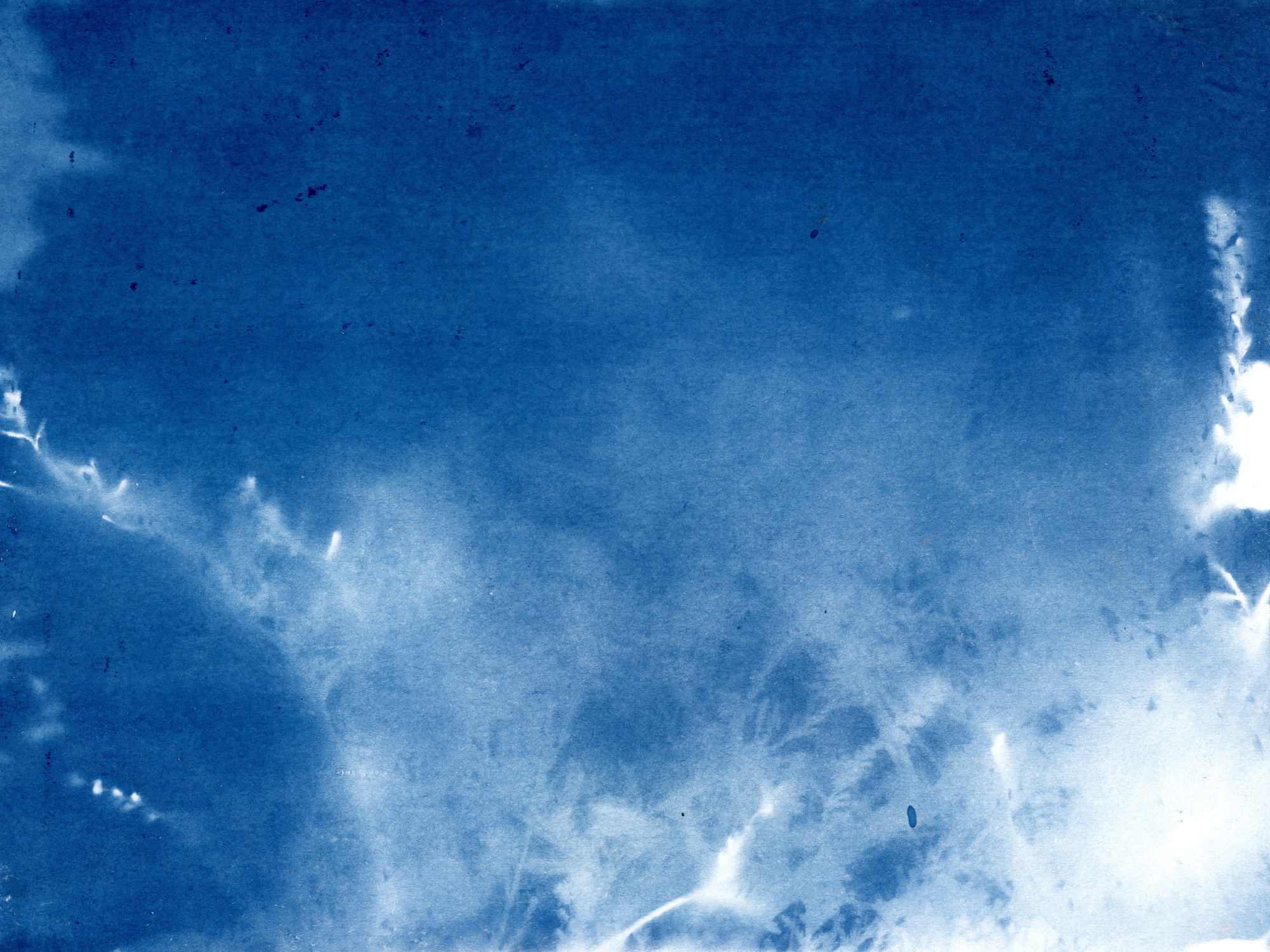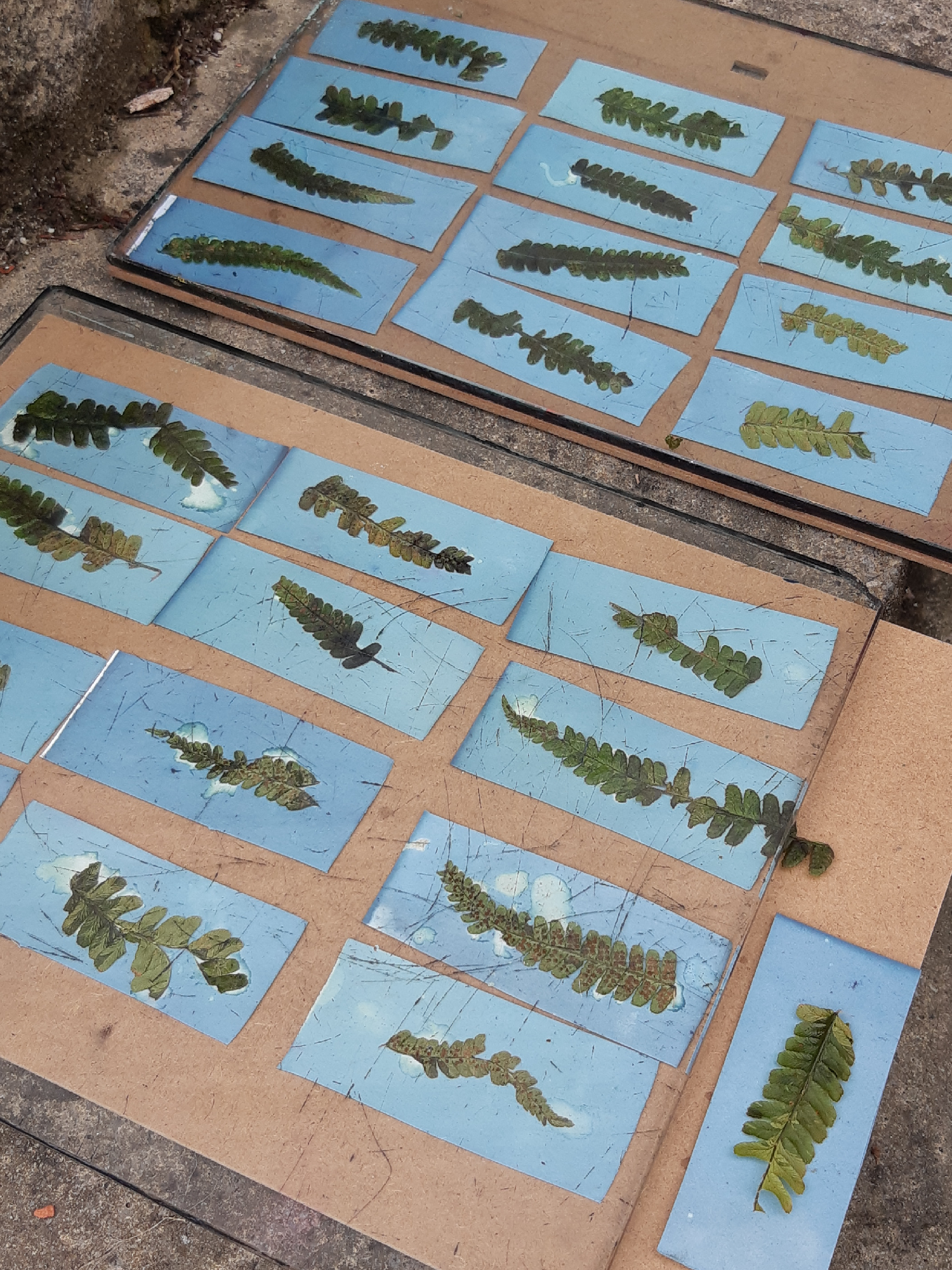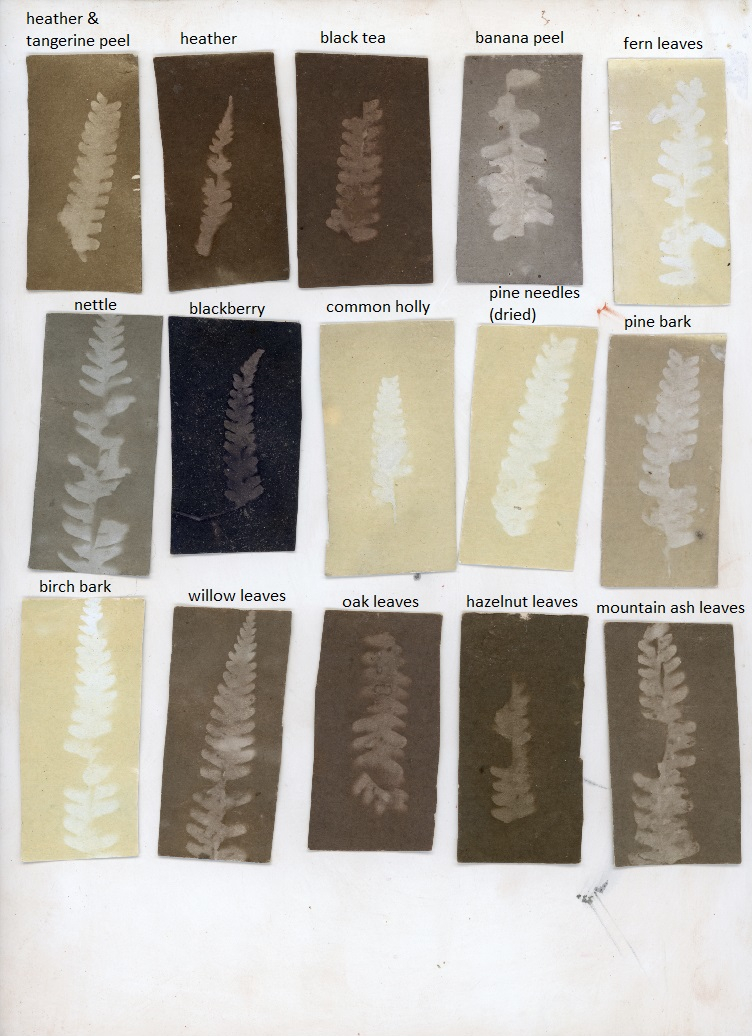Dalby Forest - cyanotype toning process
22–08-2022 -
26–08-2022
︎ artist in residence
︎ process
︎ journal
Materials
- cyanotype solution (mixed potassium ferricyanide & ferric ammonium citrate),
- paper (preferably avoiding alkaline-buffered paper),
- object/subject/ for a contact printing,
- object/subject/ for a toning,
- dishes or trays,
- sodium carbonate.
Spending a week in the Dalby Forest, I have spontaneously picked up a learning trajectory. I brought with me a mixed cyanotype solution which I got from my friend and artist Alicia Kremser because she had a leftover that she did not need over the summer. Thus I knew that during my residency period I will try to make a few cyanotypes. When I got to the Bridestones I made a life print of a heather plant. Heather grows in the fields together with the bilberries and lingonberries followed by the bracken and fern that line the forest.


When I got back to the workshop, I made a contact print of a fern leaf on cyanotype, developed the print in water and afterwards bleached it in the solution of water and sodium carbonate. The prints that lost their blue colour were then dipped into the tea made out of a heather plant and the tangerine peel, a snack I ate on the top of the Bridestone. When I saw the incredible tone the image got I decided to experiment further and prepared more toning solutions. I picked up more leaves, bark and berries and added a tangerine and banana peel as I ate them during the process.

Although I knew the process of cyanotype toning I have never tried it before. I was quite lucky that artist and co-director of the Sustainable Darkroom, Edd Carr, who has a great experience with cyanotypes, was also on the residency and he gave me advice on how to start. The result is a colour palette of 16 ingredients and a soaking process of 6 hours.
Later on, I added bilberries which also resulted in a great tone but the result is not documented and charcoal (I found burnt hay in the forest) which however did not work particularly well. The toning process is best achieved when the ingredient is rich in tannin. Some of my ingredients thus did not work well enough as they were low in tannin or they stained the paper and highlights too much as they were rather dyeing the print, for example, berries.


